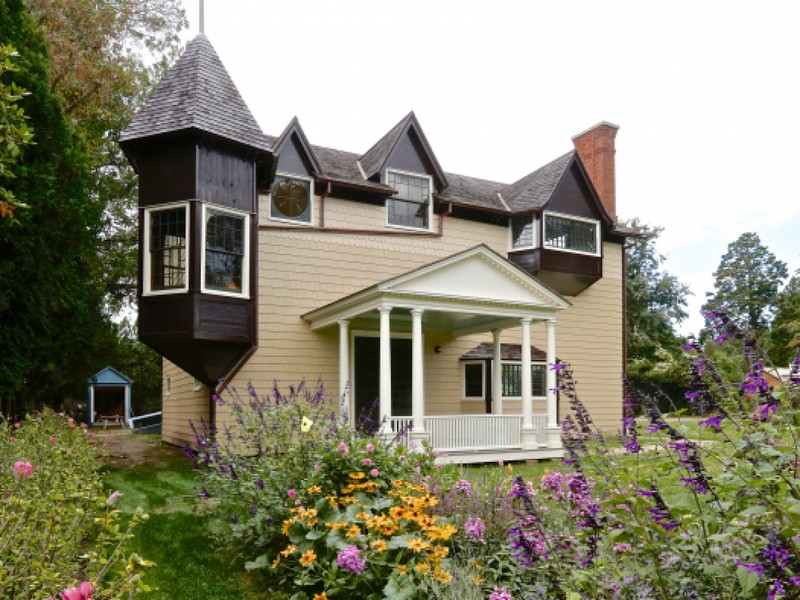Thomas Moran House
Introduction
Text-to-speech Audio
Images
Thomas Moran

Moran House

Backstory and Context
Text-to-speech Audio
Thomas Moran, who would become a celebrated painter in the United States, was born in England in 1837. While still a child, Moran's father moved his family to the United States and they settled outside of Philadelphia. As a teenager, Moran became apprenticed to an engraving firm. Eventually, Moran left the firm and went to work in the studio of his older brother, Edward, who was establishing himself as a marine painter.
As a young man, Moran traveled to England to study the works of J.M.W. Turner. It was the beginning of a lifelong interest in Turner's work, and while Turner was an exemplar to a number of painters in the Hudson River School, but none so much as Moran.
In 1871, Moran made a trip to Yellowstone in what would become a turning point in his life. Moran was funded in part by Scribner's, a new illustrated magazine, which had recently hired Moran. Moran traveled with the US Geological Survey and documented dozens of sights and kept highly detailed journals of the expedition. When the expedition was complete, Moran's illustrations captured the nation's imagination and were instrumental in the creation of Yellowstone National Park in 1872. He would later journey into the Grand Canyon, and his massive painting, Chasm of the Colorado, along with the equally large Grand Canyon of the Yellowstone, became the first two paintings purchased by Congress to hang in the Capitol.
Moran became a successful, nationally known painter following the Yellowstone and Grand Canyon expedition and paintings. In 1885, Moran designed and built a cottage on Main Street in East Hampton and was built largely of recycled construction materials. The two-story home has a quirky design, with the main room of the ground floor as Moran's studio. Much of Moran's works would be completed in the studio.
The Moran home essentially served as the beginning of East Hampton as an artists' colony. The Morans were the first artists to make East Hampton their permanent summer home, and in the coming years, numerous artists would follow suit. Moran continued to live in the home until his death in 1926.
The home, which was added to the National Register of Historic Places in 1966, underwent a significant restoration in 2017.
Sources
Colacello, Bob. Studios by the Sea , Vanity Fair . Invalid date. Accessed December 15th 2019. https://www.vanityfair.com/news/2000/08/studios200008.
McMorrow , T.E.. Thomas Moran House Opens After Restoration , The Independent . July 3rd 2018. Accessed December 15th 2019. https://indyeastend.com/news-opinion/south-fork/thomas-moran-house-opens-after-restoration/.
Thomas Moran, National Gallery of Art . Accessed December 15th 2019. https://www.nga.gov/collection/artist-info.1730.html.
